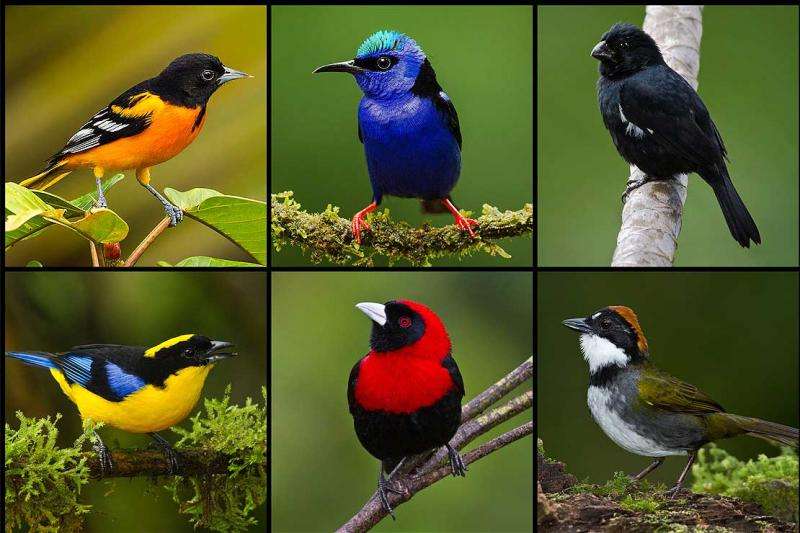Female birds show their true colours

Showy plumage in birds is not just for the boys, ecologists from Massey University, McMaster University, Canada, Monash University, Australia, and Max Planck Institute for Ornithology, Germany, have demonstrated.
Instead, certain social and lifestyle factors – rather than being male – could explain the bright colouration of a bird's plumage.
In some species, male birds are colourful, whereas their female counterparts are much browner or duller looking. This sometimes drastic split can be explained by classical sexual selection – a theory that predicts males benefit from colourful plumage by helping them outcompete other males to attract more females and produce more offspring. However, this theory does not so easily explain the bright colours shown by females in many other species.
In a paper published this week in the journal Nature, scientists analysed the colouration of nearly 6000 species of passerine birds – a group commonly known as "songbirds" – that include more than half of all bird species.
First, the researchers developed a new way of measuring colourfulness that indicated how 'male-like' or 'female-like' the plumage was in each sex of each species. This allowed them to measure whether males were more colourful than females, whether both males and females were drably coloured, or whether both males and females were colourful.
The measurements then allowed the researchers to identify the evolutionary drivers of elaborate colouration in both sexes. They found colour to be important for competition between individuals – not just between males, as sexual selection theory would suggest. In areas where females had to compete for resources or mates, or help defend their territory (such as in tropical areas or in monogamous species) they, too, were brightly coloured. When environmental or social pressures on females were relaxed, they lost their bright colouration.
Finally the researchers showed that although sexual selection does increase colouration in males, it actually has a greater effect in decreasing colouration in females. This demonstrated that a key evolutionary pattern was for colouration to decrease in females when it was not needed - the opposite pattern to what was previously thought.
Lead author on the paper, Associate Professor James Dale, from Massey University's Institute of Natural and Mathematical Sciences, says traditionally studies have focussed on male colouration, which left much of the variation in colour between species unexplained.
"A shortfall of the classical sexual selection theory is that it works so well at explaining colourful plumage in males that the rest of the variation is often forgotten about. Our research demonstrates that bright female plumage is also functional and very important."
"This is also the first study to clearly show that tropical species are more colourful than birds from other regions on earth. This does beg the question about what exactly it is about the tropics that favours more colourful plumage. We suspect that competition is fiercer in tropical environments, but more research is needed."
Dr Dale says the next steps are to see whether this trend is seen in other groups of birds and to evaluate the potential evolutionary costs associated with colourful plumage.
More information: James Dale et al. The effects of life history and sexual selection on male and female plumage colouration, Nature (2015). DOI: 10.1038/nature15509
Journal information: Nature
Provided by Massey University





















